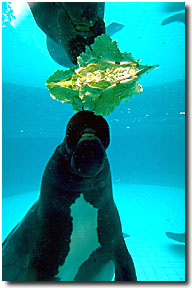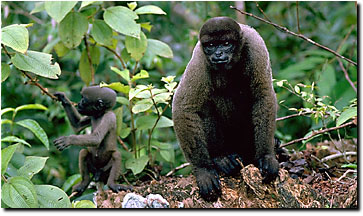
|
|
|
Distant relatives of the elephant, Amazonian manatees are docile herbivores that provide an easy target for hunters, who kill them indiscriminately for their meat, hide, and oil. Between 1935 and 1955, thousands of hides were exported to make drive belts, washers, hoses, and glue. (Photograph by Claus Meyer)
|
|
|
The institute itself is located on a swath of rain forest next to the city of Manaus, on the banks of the Amazon. Animals, including a giant anteater, roam the institute grounds freely. There's also a huge glass tank with manatees and otters. Resident and visiting scientists head out on the river every day to study electric fish or tag river dolphins. Others climb to the top of the forest canopy to study species, many not yet classified, that live nowhere else. With Global Positioning System (GPS) technology, researchers map the area's land and water. Like most efforts to save critical habitats, the National Institute of Amazonian Research is engaged in a rear-guard action. Without the growing alarm of millions, the involvement of dedicated scientists, and modern global communications tools such as the Internet, the struggle to save some of what remains of the great Amazon rain forest will collapse into total retreat.
|
|







 he Amazon rain forest is shrinking but the Internet keeps expanding, in part with constantly updated data from Brazil's National Institute of Amazonian Research. The institute's fast-growing website gives scientists and environmentalists around the world access to information conducted under the organization's auspices. The site, housed on the only Internet node on the Amazon, serves as an increasingly comprehensive and vital repository of the world's knowledge of rain forests.
he Amazon rain forest is shrinking but the Internet keeps expanding, in part with constantly updated data from Brazil's National Institute of Amazonian Research. The institute's fast-growing website gives scientists and environmentalists around the world access to information conducted under the organization's auspices. The site, housed on the only Internet node on the Amazon, serves as an increasingly comprehensive and vital repository of the world's knowledge of rain forests.
